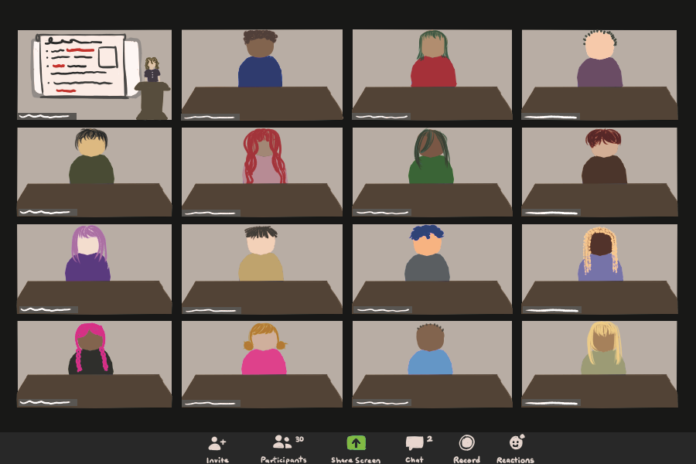Reconnect to your peers, professors and education offline
By JOAQUIN WATERS —- jwat@ucdavis.edu
There’s one university that every student my age has attended. This is a school unlike any other. It has only one classroom. The walls of this classroom are either blindingly white or suffocatingly dark, depending on your preference. The desks are similarly malleable; one can hide themselves from view completely if they wish, though sometimes the professors understandably take issue with that. Distractions are many at this school, and connection with your peers is borderline impossible. I am speaking, of course, of the dreaded Zoom University.
It is undeniable that something crucial was lost in the quick shift to online learning at the onset of the pandemic. Much as we tried, stiff disinterest and awkwardness infected Zoom U almost immediately. The professors struggled with the technology. The students (myself included) struggled with distractions. One by one, those little squares displaying our “smiling faces” went black, now displaying only our name and the occasional emoji to indicate we were still there. One by one, the professors stopped caring whether we turned the video back on. Everyone stopped caring. And like that, my high school years petered out with a whimper.
I am entering my third year at UC Davis, and (other than a mercifully brief period in January 2021) Zoom U is a thing of the past. And yet, I still find consistent reminders of it everywhere I look. It struck me early on in my freshman year that though we may have left Zoom itself behind, the Zoom mentality did not leave us. The disinterest and awkwardness that were its hallmarks can be found, on some level, in all of my early classes. And though this has waned in recent years, I still feel its influence. Students (even friends) still tend to sit apart from one another in lecture halls, almost as if unconsciously recreating those little squares. Lab discussions can take an excruciatingly long time to get going, if they ever do; every time I hear a TA awkwardly dismiss students early after realizing that nobody wants to speak, I am uncomfortably reminded of the moment in Zoom U when I observed a breakout room full of black boxes, all of whom have collectively decided to stay silent until the five-minute “discussion time” was up.
It must be said, of course, that this is not entirely a symptom of the pandemic. The teacher-student relationship has always been defined by a give-and-take and one that frequently collapses if too little effort is given by either party. Regardless, Zoom University — necessary though it was — cultivated an environment that discouraged passion. Teachers and students alike were given reasons to contribute less in a scenario that necessitated more. Education suffered greatly as a result. We may have widely left Zoom U behind, but it hasn’t left us behind.
So how can this be fixed? In my opinion, there is a simple (but deceptively difficult) solution: a widespread return to hands-on learning. At the risk of sounding antiquated, years of the Zoom mentality have led me to the conclusion that the most effective form of education is still the kind that forces us to engage intimately with what we are studying. One can’t be expected to truly understand a subject like botany solely through PowerPoint lectures and discussion posts on Canvas. A guided trek through the Arboretum would be much more conducive. The same goes for broader things, like note-taking. Many of my professors have admirably tried to adjust to the times by allowing and even encouraging note-taking on our laptops, but I still find that, for me, writing physical pen-and-paper notes drills things into my head far more effectively than jotting the same concepts down on a Google Doc. The allure of opening another tab —- another thing cultivated by online learning —- is too strong. Some may argue that one can still get distracted while writing physical notes, which is true but is doodling in the margins really comparable to opening up YouTube?
This is not to say that classrooms should ignore modern technology entirely. That is simply not realistic. Nor is it meant to downplay the work done by so many in a virtual setting. Online classes should be an option; there are many who are genuinely helped by the format being available, and many who, for whatever reason, have no other option. I would never suggest that the option be removed. All this is only to say that the time spent learning entirely through a screen has given us the false assumption that it is a suitable replacement for learning through experience. Time has proven that it is not. Balance is required. Just as we need to feel the wind in our hair and hear the chirping of birds to remember what it is to be alive, we need to feel the ruled paper between our fingers and hear the squeak of a marker on the whiteboard to remember what it is to learn.
Written by: Joaquin Waters — jwat@ucdavis.edu
Disclaimer: The views and opinions expressed by individual columnists belong to the columnists alone and do not necessarily indicate the views and opinions held by The California Aggie.




